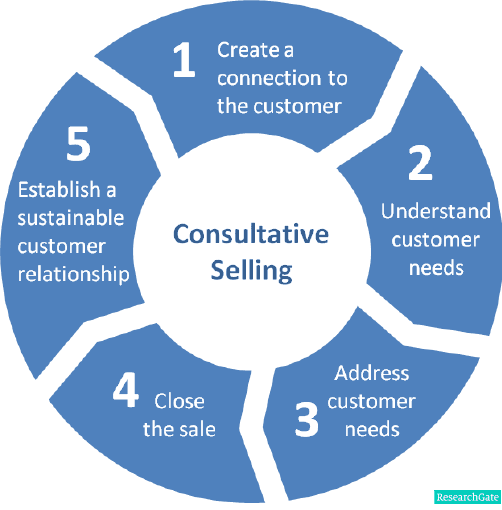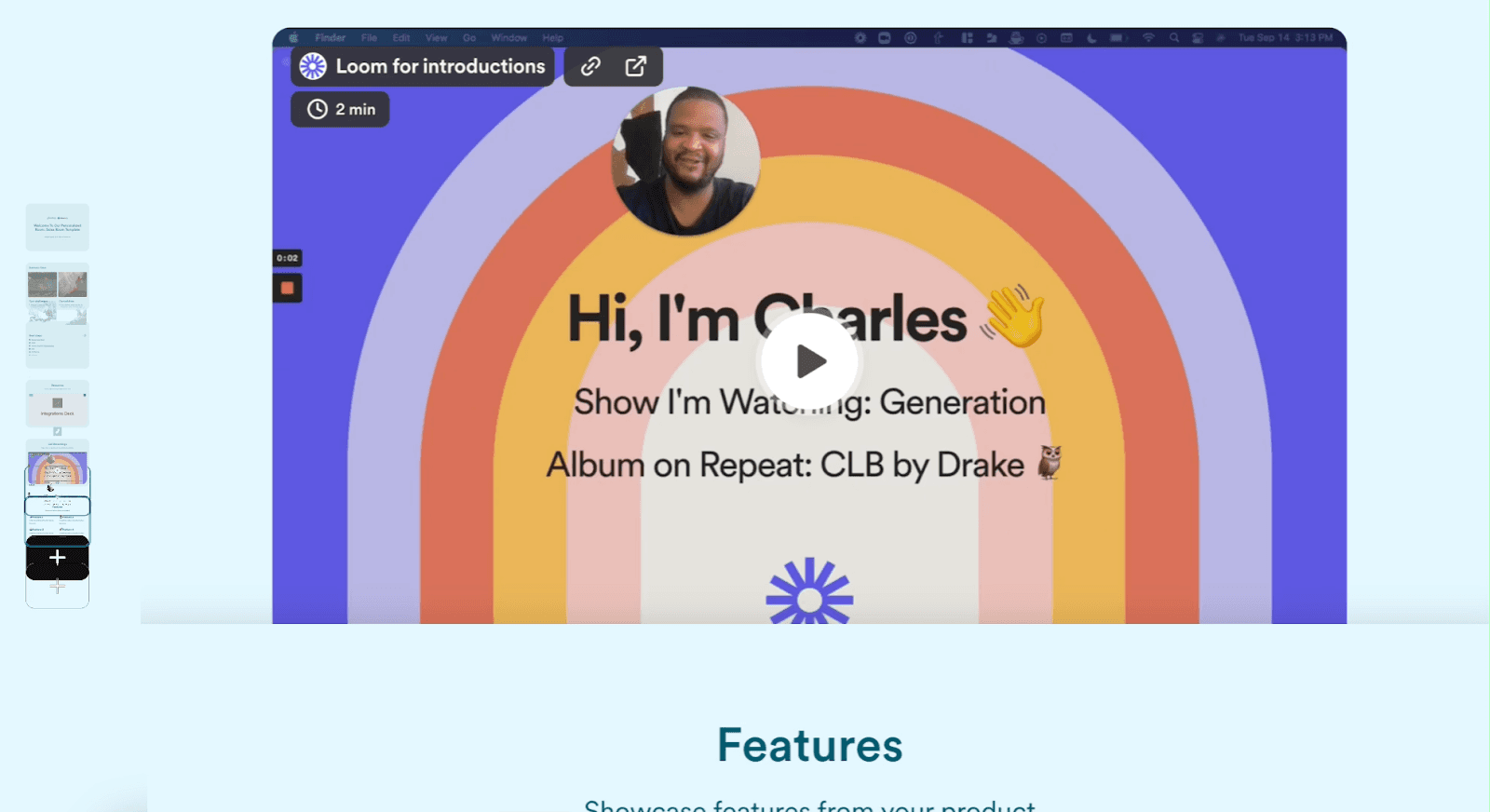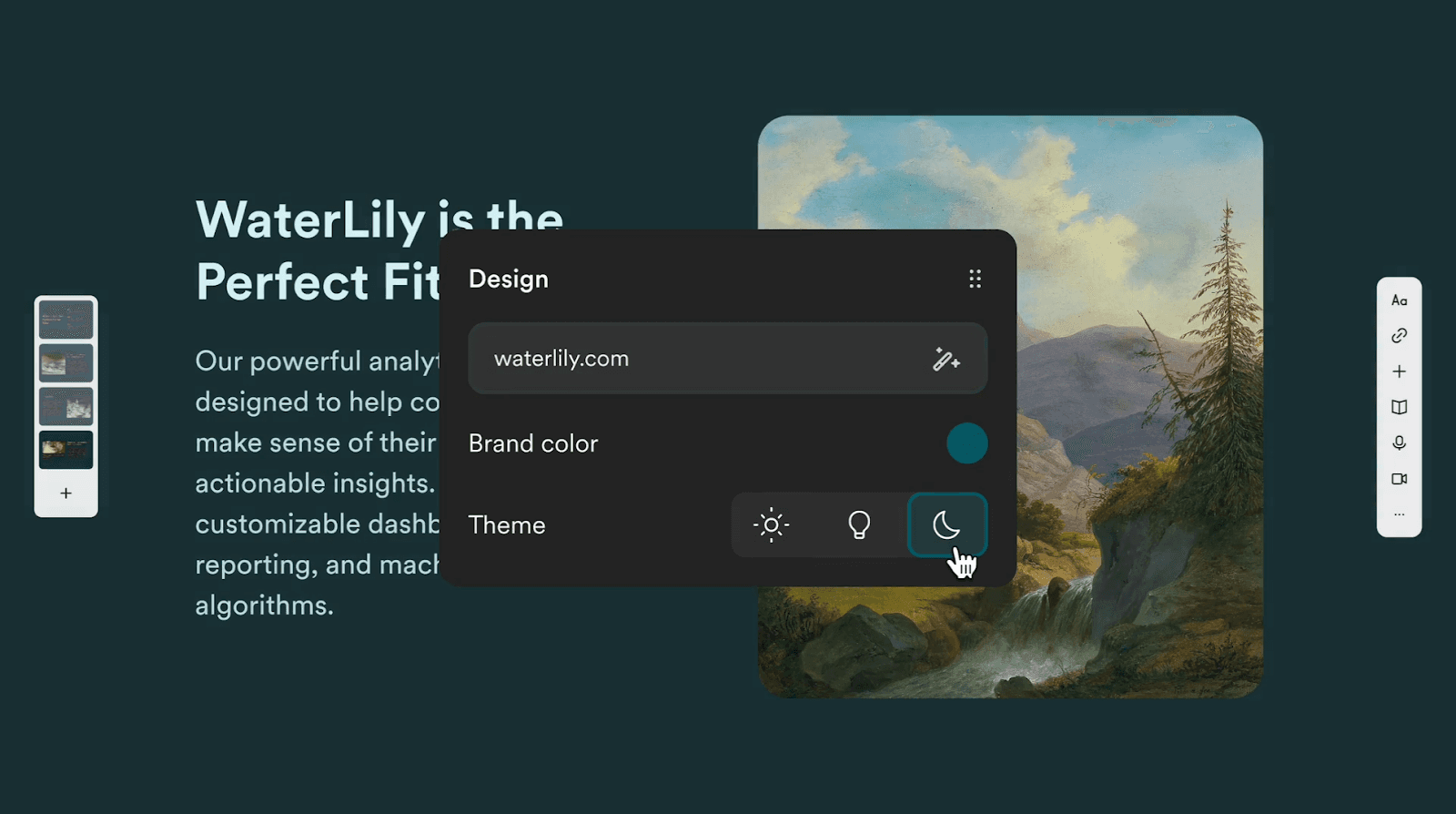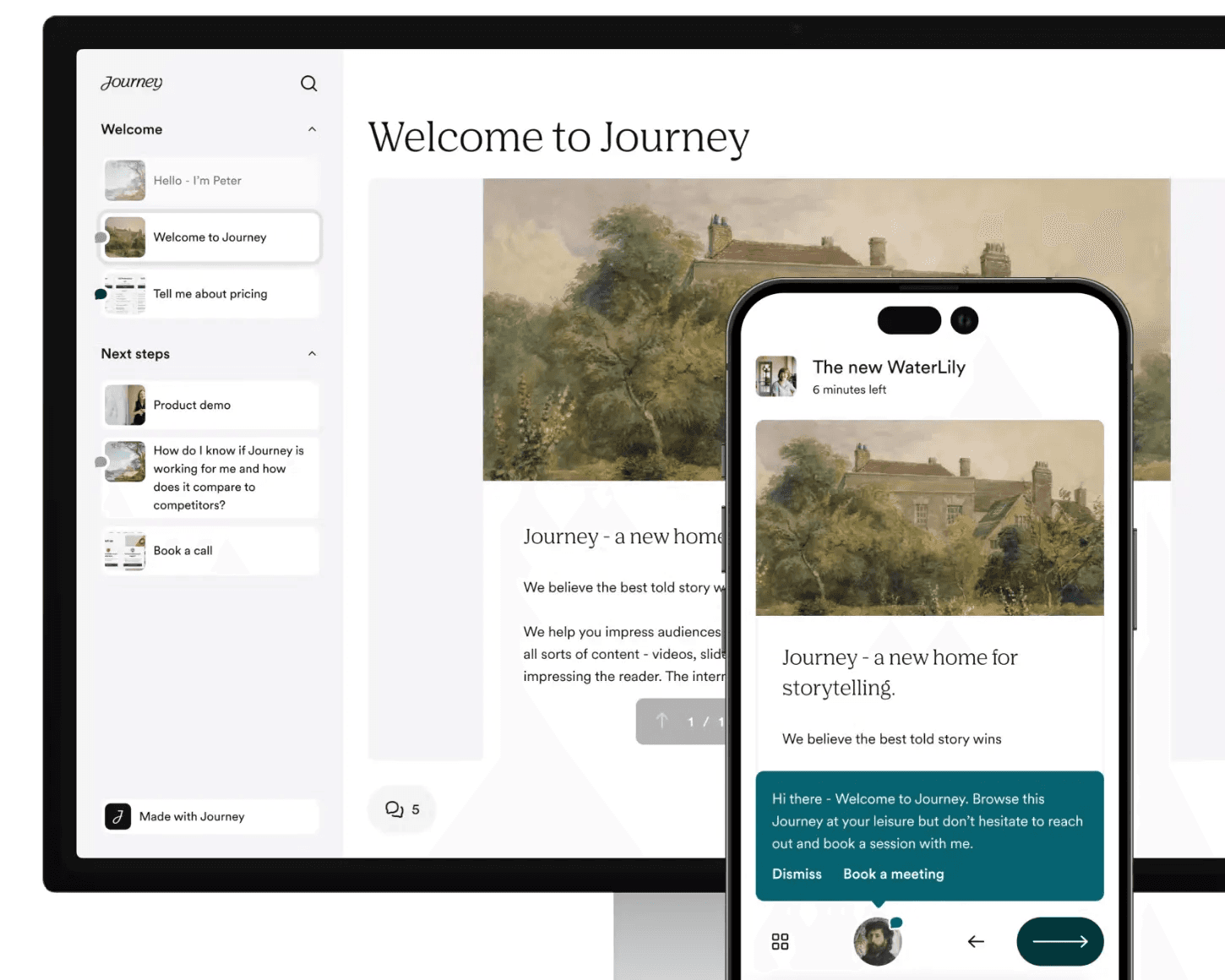April 11, 2024

If you take enough time to understand how people make decisions, you're already far ahead of most salespeople out there.
If you've read our article on The Cutting-Edge Sales Trends for 2024, you know that this year, many salespeople will adopt a consulting approach over their current strategies. By which I mean: they’ll be transitioning into trusted advisors rather than just sales reps.
And 89% of buyers will be thanking the heavens for this. After all, they’d rather not buy anything than talk to someone who’ll clasp their hands together and say, “How can I help?” – knowing full well they don’t actually want to help. They want to earn their commission and go on their merry way.
Speaking of which…
If you think consultants just restate what businesses already know, but in a more expensive way…you’ll need a new definition. In our dictionary, true consultants build trust and truly grasp the heart of a potential customer's challenge through meaningful conversations and data-driven insights.
And that’s what Consultative Selling is here to do.
What Is Consultative Selling?

Consultative Selling is a strategy meant to understand customer needs and offer personalized solutions through creative problem-solving and good old talking. Not just to say you’ve gone the extra mile, but rather to value prospective customers at every turn, from the initial contact to closing the deal.
By the way, a lot of people will say meaningful relationships are a goal, but I’d rather say they’re an aftermath.
If I could, I'd call it Behavioral Sales. Human Sales, or something along those lines. Because that is what it ultimately boils down to.
Anyway…Consultative Selling.
Today's buyers are sharp and self-supporting. They've done their own research prior to hearing from salespeople and aren't easily won over. They’re skeptical and have an eyebrow raised the whole time they’re talking to you.
Decisions aren't as straightforward either, especially with multiple stakeholders in the mix when it comes to B2B. And when it comes to loyalty, it's a lot more fluid these days.
Sellers often underestimate the amount of research they put in before making a move. As a result, they need an approach that takes that newfound independence into account. Consultative Selling.
Now, looking at it from the seller's side, it's not easy, either. The more stakeholders involved, the trickier the “juggling act” – and the higher the chances of it stretching out the sales process.
It’s the strategy you should rely on if buying committees are doing your head in, or if you know for a fact that your process is leaking leads because they aren’t getting the information (or value) they need from you. Even though you know your product will help them.
How Is It Different From Solution Selling (or Solution-Based Selling?)
In contrast, Solution Selling is more about providing ready-made solutions for specific customer challenges. It tends to follow a structured approach and may focus more on showcasing the features and benefits of the solution rather than building connections with customers.
For example, in a solution-selling scenario, let's say your customer needs better project management tools, and you've got just the software package to streamline their workflows.
Both Consultative Selling and solution selling have their merits in this case. Deciding which approach to use depends on factors like:
The nature of your product, or what your product or service actually does, and how it solves a problem or fulfills a need for your customers.
The complexity of your customers' needs, or how intricate your customers' requirements are. Some customers may have straightforward needs, while others may have more complex challenges (which is usually the case in long B2B sales cycles).
The dynamics of the sales relationship between you and your prospects. Factors such as communication style, trust, rapport, and how the relationship evolves over time.
While solution-based selling may be more efficient when providing predefined solutions, the real value lies in connecting with your customers on a deeper level and addressing their needs, the right way.
The Consultative Selling Framework
Frameworks. Love them or hate them, they're essential for getting the hang of things before you start doing your job automatically. So, if the idea of a Consultative Sales framework appeals to you, keep your eyes peeled.
(By the way: this is a high-level description of each step. We’ll get into more detail in just a moment.)
Prepare
Before jumping into any sales chat, do your homework. Check out the prospect's company, industry trends, and any challenges they might be facing. This prep work sets you up to have a confident chat and craft your approach to what they need to hear and see.
Connect
Building trust is key to kicking off a productive sales conversation. That’s what it is: a conversation. Nothing more. Find common ground and show genuine interest in what they're dealing with. Starting with a friendly ice-breaker and open-ended questions helps build a connection from the start.
Understand
Take the time to really get what the prospect needs, wants, and struggles with. Ask some probing questions to uncover their hidden challenges and goals. The goal is to gather as much information as you can to tailor your solution to their needs.
Address
Once you've got a handle on the prospect's needs, it's time to present your solution in a way that hits the right spot. Focus on how your product or service can solve their specific problems, meet their goals, and add value to their lives. Use real-world examples to show how you've helped others in similar situations.
Close
Getting the sale across the finish line means guiding the prospect to a decision that works for both of you. Make sure your solution fits their needs, and then ask for their commitment to move forward.
Nurture
You know the relationship doesn't end once you close. Keep in touch with your customers to make sure they're happy, address any concerns, and explore opportunities for future upselling or cross-selling.
Beyond the Obvious: Why Is Consultative Selling the Way to Go?
Every “No” Leads You Closer to a “Yes”
In Consultative Selling, every "no" from a prospect actually brings you closer to a "yes." Even if a sale doesn't close, the process of engaging with the prospect provides valuable insights into their motivations, objections, and needs.
By understanding why they didn't move forward, you gain valuable information that can help you fix your approach and address their concerns more effectively in the future. This iterative process not only improves your chances of eventually closing the sale but also strengthens your relationships with prospects, by demonstrating your commitment to understanding and meeting their needs.
It Shortens the Sales Cycle
Consultative Selling speeds up the sales process by building trust and confidence with your buyers. By demonstrating your expertise and genuinely helping them find the right solution, you reduce hesitation and uncertainty, so it’s easier for them to decide and move forward with the purchase.
It Gives You a Huge Differentiator
Believe it or not, your competitors might still think of sales the way most people do. This gives you a major chance to stand out from the competition by aligning your sales approach with what your market is begging for.
Instead of just pushing products, you focus on understanding and addressing what your customers actually want, giving you an edge over rivals who may take a more generic approach.
Not to mention, it can help you make more money by improving your chances of closing deals and expanding your customer base. By understanding your customers' needs and offering tailored solutions, you're more likely to win their business and keep them coming back for more.
A quick (and honest) note: Those benefits will only happen if you ask the right questions and actively listen to your customers. And, of course, if you’re targeting the right audience. Don’t use a failed attempt at Consultative Sales as a scapegoat!
Keep In Mind...
Don't Fabricate Scarcity. Or Anything, for That Matter
Fear can be a powerful motivator, but nobody, not even you, likes feeling pressured or manipulated. People should be drawn to buy from you because of the value your product brings to their lives, not because they're trying to escape their problems. And even if you're sprinting away from your problems, eventually you'll run out of steam.
So, when it comes to closing deals, think twice before resorting to fabricating scarcity or pushing false urgency. Sure, if there's a legitimate reason for acting fast, like a genuine time-limited offer, then go for it. But making things up just to push a sale? That's a shady sales tactic, and you're better than that.
At the end of the day, building trust and credibility with your customers is far more valuable than any quick commission. So, keep it honest, keep it real, and remember – you're not a sleazy salesperson
A List of Questions? Good. A Human Back-and-Forth? Ideal.
Remember our talk about frameworks? Lists and checklists are brief guides – they give you direction, but you shouldn't be glued to them the whole way. If you're always staring at a map, you might miss what's right in front of you. You might even crash along the way, so be careful there.
When you're driving the conversation, embrace the fluidity of a real dialogue. Don't hesitate to veer off track, because that's where the real discoveries happen. You might stumble upon insights you were prepared for, or uncover entirely new avenues to explore. So, let the conversation flow naturally and be open to the unexpected.
Expect Pushback
What’s a sales pitch without a challenge? It’d be pretty dull. Anyone could land every single deal without having to persuade ideal prospects of a solution.
No matter how qualified your prospects are, they will push back. They’ll ask questions, they’ll have doubts – it’s just how it’s meant to be, and it would be suspicious if it were different.
But, you’re no stranger to this.
The key is in the preparation. No surprise there. Make a list of objections and come up with counter-arguments if you must. The more you talk to customers, the smoother it’ll get for you.
Don’t Consider the Product In a Vacuum
Your product isn't just another piece of software or tool, unless you think of it that way. Instead, it's the gateway to the life your prospects want to lead and the goals they want to achieve. So, above all, focus on selling your product in a way that resonates with their everyday lives.
Do you know what their daily routines look like? Feels like? It’s the first step.
What does success look like for them? What are the biggest challenges they face in their hectic routines that your product can help solve (and fits into)? And how can your product improve their personal lives, not just their professional ones?
Sure, you can rattle off all the features and benefits of your product, but when it comes down to it, how does it stand up in the thick of every single boring day?
Focus on selling the solution, in the real sense of the word.
The Tip You Don't Want But Need: Practice Active Listening
Again, remember when I said that understanding people would set you apart from most salespeople these days? Mastering active listening is a big part.
Now, I get it – active listening can feel like a chore. We all crave quick fixes and ready-made solutions that we can apply right away. Active listening may not be the flashiest skill to learn, but it's incredibly powerful when you get to know how it truly works.
It isn't just for the office, either. You can practice it anywhere – with your significant other, your family, your friends, hell, even with strangers. Not only will it make you a better salesperson, but it'll also make you a better listener, a better partner, a better friend, and overall, a better human being.
Consultative Selling Is Stronger with a Digital Sales Room
Consultative Selling is even more effective when paired with a Digital Sales Room like Journey, which brings together all your sales materials into one accessible platform.
Whether it's videos, slide presentations, product demos, or support documentation, a DSR delivers the right content in the format each viewer likes to consume.
While your typical presentations are great, they're mostly limited to text, links, images, and graphics. A digital sales room, on the other hand, supports pretty much any embed you can think of.
Let's take a closer look at how it works.
You'll Have the Supporting Data You Need at Every Stage, In Their Native Format

With Journey, you'll have all the data you need at your fingertips, presented in a way that speaks directly to each prospect. When we’re talking about stakeholders, it doesn’t talk to the group as a whole but rather to each of them.
Let me explain.
Whether it's before or after a call, you can share a range of content types just like you would in an email, but not in the form of ugly links and attachments. If it’s a video, they can watch said video right inside your Journey. If it’s a slide deck, same thing.
How Do Digital Sales Rooms Work in a Real-Life Scenario?
You're selling Journey. You’re chatting away with a prospect who's feeling a bit skeptical about the ROI of your product. They're not quite convinced it's worth the investment.
You quickly pull up this testimonial…
“We did an A/B test with 3 of our 6-person BDR team using Journey, and the other half using normal emails with multiple links. After 5 weeks, the Journey test group had generated 47 intro calls, and the control/normal group had generated 29. That's pretty significant data. In addition to being a more engaging format of sharing information, it's also given our AEs and CSMs invaluable intelligence on who and how much their prospects/customers are consuming that information.” – Evan Huck, CEO, UserEvidence
…along with a video review from a happy customer who was once in their shoes. This video tells the story of how they implemented your solution and saw some serious results – think increased efficiency and crazy return, like 75x ROI.
And you saw that coming. But they didn’t. If they don’t trust you, have the solid data proof ready at hand. And watch the skepticism melt away.
Easy for You, Easy for Them

With Journey, you can create personalized content for every prospect in just a few minutes, and reuse a winning template for your future sales class.
Forget about juggling multiple links and making your champion do all the legwork. With Journey, you can create and send a single link that becomes the place for all the content your prospect needs – from onboarding and training to planning, QBRs, and renewals.
You can start from one of our templates or create your own from scratch. Either way, you can duplicate these templates with just a few clicks, making it easy to create Journeys for any new prospect that comes along.
You'll Be Over Your Prospect's Shoulder

How useful would it be to watch exactly how stakeholders interact with a Journey as they do it?
If you could ask questions like…
“What grabbed your attention there?”
“What exactly made you leave at that point?”
“You opened the Journey again, even though you had viewed every deck…why exactly was that?”
Thankfully, the platform allows you to do that (and more) without making it weird. You can chat with prospects right from Journey, as they’re viewing it, so they can ask you any questions in real time.

And even if they don’t, you can still see who viewed the Journey, as well as the content they most interacted with and for how long they stayed. This, too, applies to active listening: even when your prospects aren’t saying something…they’re saying something.
Not a Curious Person? Then Consultative Sales Is Unlikely to Work
Think of approaching each prospect as if you’re conducting an experiment – but in the best way possible.
After all, biases and assumptions can sneak up on you before you even realize it, especially since they lurk in your subconscious. As a result, you might be asking a certain question to get a certain answer. That's why it's crucial to recognize biases and keep them in check.
Sure, you could go through every sales course out there, but ultimately, you'll find yourself with the same principles: listening first, talking later. Taking a step back, seeking to understand, and nurturing the relationship.
That way, you approach prospects with curiosity and openness, ready to learn and adapt along the way.

